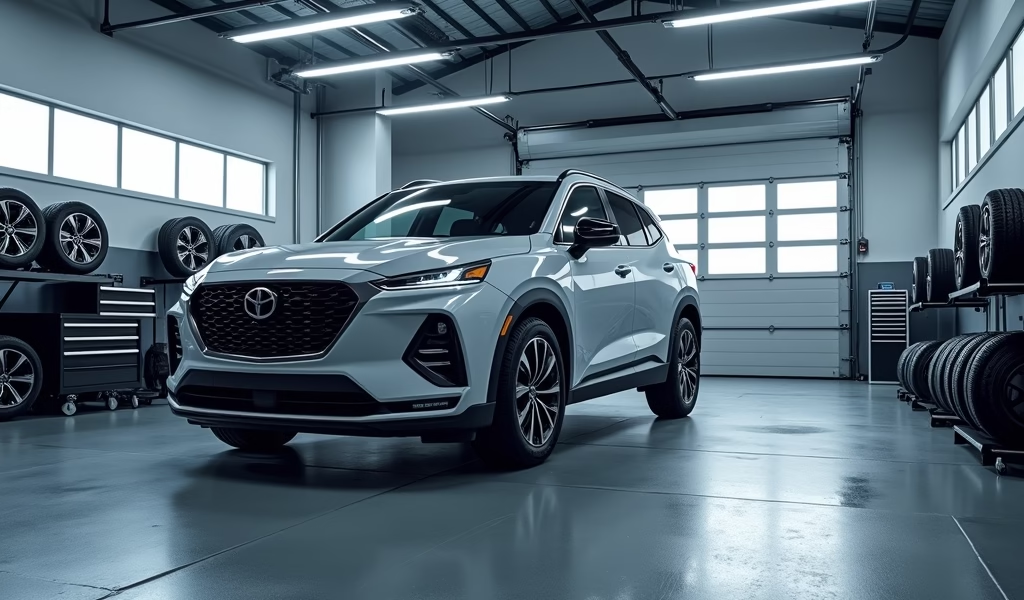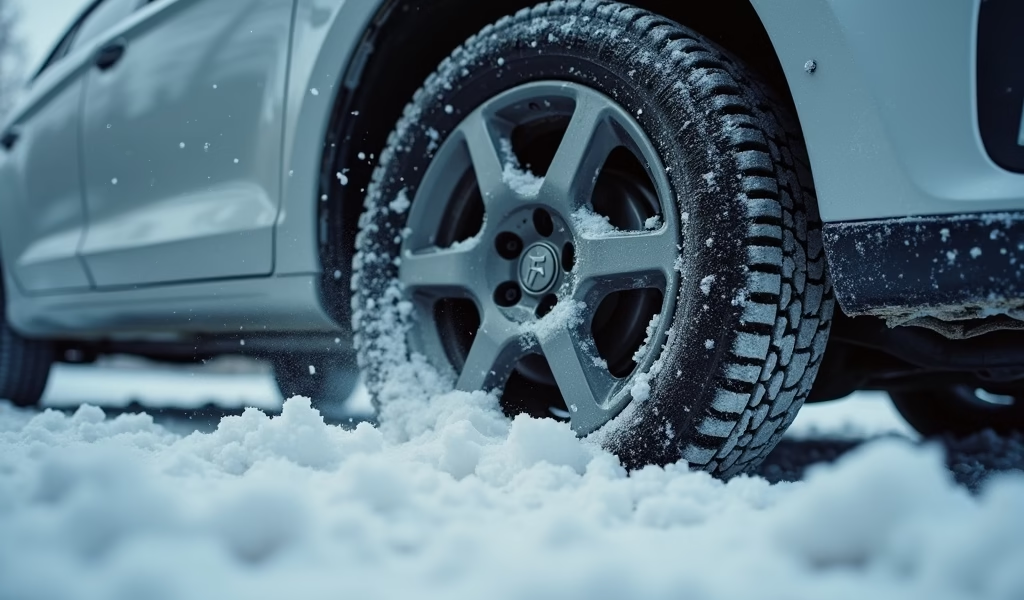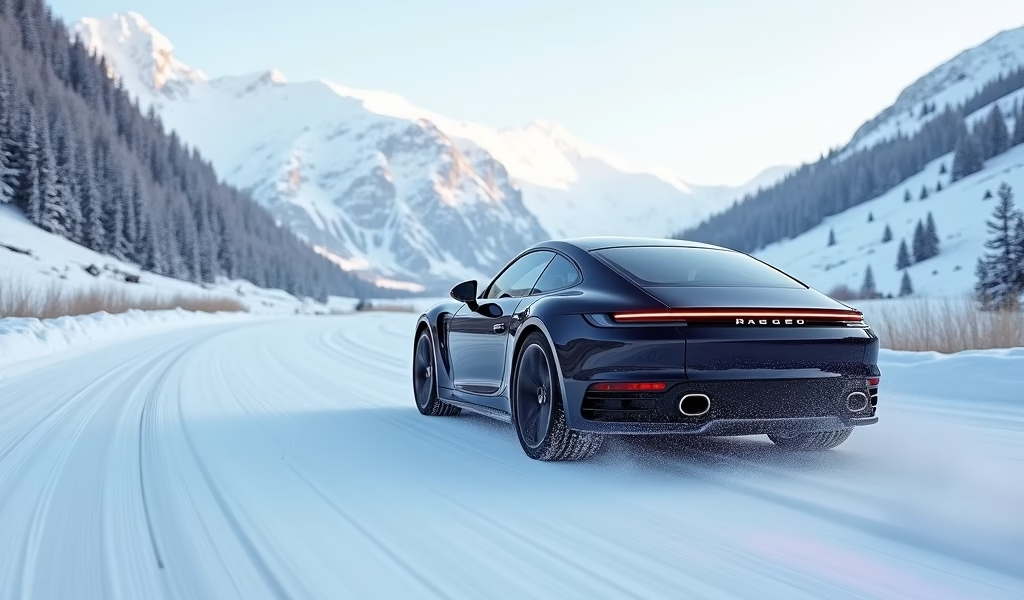Overview
This article provides detailed guidance on snow tires, explaining why they’re essential for winter safety, how their specialized design creates superior grip in cold conditions, and presenting seven top-performing options across various price points. It also covers installation timing, maintenance best practices, and budget-friendly alternatives, emphasizing that proper winter tires are the most effective upgrade for safe winter driving regardless of vehicle type.
Table of Contents
- Why Snow Tires Matter: Not Just Another Expense
- How Snow Tires Work: The Science Behind the Grip
- 7 Top-Performing Snow Tires Worth Your Investment
- Budget-Friendly Options Without Compromising Safety
- Premium Choices for Extreme Winter Conditions
- Installation and Maintenance: Getting the Most from Your Snow Tires
- Conclusion: Investing in Your Winter Safety
- Frequently Asked Questions
Why Snow Tires Matter: Not Just Another Expense
Finding the best snow tires isn’t just about surviving winter—it’s about thriving in it. As a mechanic who’s pulled countless vehicles from snowbanks over 20 years, I can tell you firsthand: proper snow tires are like giving your car superpowers when the mercury drops and snowflakes start to fly.
Think of driving on snow with regular tires as trying to walk across an ice rink in dress shoes—technically possible, but you’ll be moving like a newborn deer. Winter tires outperform all-seasons in cold conditions because they’re designed specifically for the elements that make winter driving a white-knuckle experience.
Many drivers balk at the extra expense, but when you’re facing a steep, snow-covered hill with precious cargo aboard, those specialized tires aren’t a luxury—they’re essential equipment. Snow tires are to winter driving what a life jacket is to boating: something you hope you won’t need, but are mighty grateful to have when conditions turn treacherous.
How Snow Tires Work: The Science Behind the Grip
Snow tires aren’t simply regular tires with deeper treads—they’re engineering marvels designed specifically for cold-weather performance. The rubber compounds in winter tires stay flexible in freezing temperatures, while all-season tires harden like hockey pucks when the temperature drops below 45°F.
Picture this: each tire has thousands of tiny slits called “sipes” that act like claws, biting into ice and packed snow. These sipes create edges that grip winter surfaces, similar to how a snow boot’s tread keeps you upright on slippery sidewalks. The wider, deeper channels in snow tire treads also work to evacuate slush and water, preventing the dreaded hydroplaning that sends so many cars sliding off winter roads.
According to research by Tire Rack, vehicles equipped with proper winter tires can stop up to 30% shorter on snow and ice compared to those with all-season tires. That difference can be the margin between a close call and a costly collision.

7 Top-Performing Snow Tires Worth Your Investment
After testing dozens of options across various vehicles and winter conditions, these seven snow tires consistently deliver exceptional performance when the going gets cold and slippery:
1. Bridgestone Blizzak WS90
The Blizzak WS90 is the winter tire equivalent of a Swiss Army knife—versatile and reliable in virtually all winter conditions. Its specialized MultiCell compound literally absorbs water from ice surfaces, creating remarkable grip even on the slickest roads. At $165 per tire, these are particularly effective on sedans like the Honda Accord and Toyota Camry, providing confident braking and cornering when temperatures plummet.
2. Michelin X-Ice Snow
Michelin’s X-Ice Snow tires are like having a seasoned winter driver built into your wheels. Their Flex-Ice 2.0 compound maintains flexibility in extreme cold, while the directional tread pattern cuts through snow like a hot knife through butter. Priced at $178 per tire, these excel on crossovers such as the Honda CR-V and Toyota RAV4, offering a perfect balance of winter performance and reasonable road noise.
3. Continental VikingContact 7
If winter driving were an Olympic sport, the Continental VikingContact 7 would be a gold medalist. Its rapeseed oil-enriched compound stays remarkably pliable in bitter cold, while the tread design with its “grip teeth” technology provides almost startling traction on ice. These tires cost $182 each and perform exceptionally well on luxury sedans like the BMW 3-Series and Audi A4, matching their precision handling characteristics even in adverse conditions.
4. Nokian Hakkapeliitta R5
Coming from Finland, where winter isn’t just a season but a way of life, the Hakkapeliitta R5 is like having tiny Finnish rally drivers in each wheel. These tires feature Arctic Sense Grip technology and Cryo Crystal particles that act like microscopic studs, digging into icy surfaces. At $195 per tire, they’re especially suited for Subaru Outbacks and Foresters, complementing these vehicles’ all-wheel-drive systems for unstoppable winter performance.
5. Pirelli Ice Zero FR
The Pirelli Ice Zero FR combines Italian flair with Nordic practicality. Its directional arrow tread pattern evacuates snow efficiently while the specialized winter compound maintains grip in temperatures that would leave lesser tires skidding helplessly. These tires run $175 each and match perfectly with performance-oriented vehicles like the Volkswagen Golf and Mazda3, preserving their engaging driving dynamics even when roads turn treacherous.
6. Goodyear WinterCommand Ultra
The WinterCommand Ultra is Goodyear’s answer to the question, “What if we made a tire that performs like it has built-in snowshoes?” Its deep, aggressive tread pattern features zigzag sipes and wide grooves that practically laugh at deep snow. These tires cost $158 each and work wonders on pickup trucks like the Ford F-150 and Chevrolet Silverado, providing the confidence needed when hauling valuable cargo through winter conditions.
7. Yokohama iceGUARD G075
The iceGUARD G075 is like having a steadfast companion on winter roads—always reliable, never dramatic. Its triple-action compound combines high-silica content with microscopic bite particles for exceptional ice performance. Priced at $168 per tire, these are ideally suited for SUVs like the Jeep Grand Cherokee and Ford Explorer, maintaining their all-terrain capabilities when snow covers those terrains.
Budget-Friendly Options Without Compromising Safety
Not everyone can splurge on premium winter rubber, but that doesn’t mean you should skimp on safety. These more affordable options deliver impressive winter performance without freezing your bank account:
General Altimax Arctic 12
At $129 per tire, the General Altimax Arctic 12 punches well above its price class. With a directional tread design and strategically placed sipes, these tires provide excellent snow traction for compact cars like the Honda Civic and Toyota Corolla. They might not have the refinement of premium options, but they’ll keep you confidently moving when the flakes fly.
Cooper Evolution Winter
Cooper’s Evolution Winter tires are the working-class heroes of the winter tire world. Priced at $115 each, they feature an aggressive directional tread pattern and saw-tooth center rib that bites into snow with surprising authority. These are particularly well-suited for older sedans like the Chevrolet Malibu and Ford Fusion, adding modern winter performance to vehicles that might otherwise struggle in slippery conditions.
Uniroyal Tiger Paw Ice & Snow 3
At just $108 per tire, the Uniroyal Tiger Paw Ice & Snow 3 represents perhaps the best value in winter tires today. Don’t let the bargain price fool you—these tires feature a modern winter compound and computer-optimized tread pattern that delivers dependable traction in most winter conditions. They’re especially suitable for budget-conscious drivers of small SUVs like the Hyundai Tucson and Kia Sportage who need winter capability without premium pricing.

Installation and Maintenance: Getting the Most from Your Snow Tires
Even the best winter tires need proper installation and maintenance to perform at their peak. Here’s how to maximize your investment:
When to Install
The old mechanic’s rule of thumb is simple: when temperatures consistently drop below 45°F (7°C), it’s time for winter rubber. This usually means October or November in most northern regions. Don’t wait for the first snowfall—by then, you’ll be joining the frantic rush at tire shops, and cold temperatures alone are enough to compromise all-season tire performance.
Complete Sets Only, Please
Installing just two winter tires is like wearing one snow boot and one sneaker—you’re creating a dangerous imbalance. Always install a complete set of four matching winter tires. Mixing tire types creates unpredictable handling that can be more dangerous than having no winter tires at all.
Pressure Checks
Winter temperatures cause tire pressure to drop—approximately 1 PSI for every 10°F decrease. Check your pressures monthly, preferably when tires are cold. Underinflated tires reduce traction, increase fuel consumption, and wear prematurely.
Rotation Matters
Have your winter tires rotated halfway through the season to ensure even wear. Front tires typically wear faster, especially on front-wheel-drive vehicles like the Honda Civic or Toyota Corolla. Rotation extends tire life and maintains balanced performance.
Proper Storage
When spring arrives, clean your winter tires thoroughly before storage. Keep them in a cool, dry place away from direct sunlight and ozone sources (like electric motors or furnaces). Consider tire bags or covers to protect the rubber compounds from degrading. Proper storage can add years to your winter tire lifespan.
Many drivers find that investing in a separate set of wheels (steel wheels are economical options) for their winter tires makes seasonal changeovers faster and less expensive in the long run. This approach is particularly popular with owners of vehicles like the Subaru Impreza and Volkswagen Golf who live in areas with severe winters.
According to Consumer Reports, properly maintained winter tires can last 3-4 seasons for the average driver, making them a sensible investment for anyone facing regular winter driving conditions.
Conclusion: Investing in Your Winter Safety
Choosing the best snow tires isn’t just about spending money—it’s about investing in peace of mind when winter shows its teeth. Whether you opt for the premium performance of Nokian Hakkapeliitta R5s or the budget-friendly reliability of General Altimax Arctic 12s, dedicated winter tires transform your vehicle’s cold-weather capabilities.
Remember that winter tires are like insurance you can actually feel working every time you drive. The confidence they provide on that first snowy commute, the security they offer when carrying precious family members, and even the stress they eliminate during winter travel justify their cost many times over.
As someone who’s helped countless stranded drivers in winter storms, I can tell you that proper snow tires are the single most effective upgrade you can make for winter driving safety. When the forecast turns frightful, you’ll be thankful you invested in rubber that’s designed specifically for the task at hand.
Don’t wait until the first snowflake falls to consider your winter tire options. Research now, purchase early, and be prepared before winter arrives. Your future self—safely navigating through a winter storm with confidence and control—will thank you.
Frequently Asked Questions
When should I put snow tires on my vehicle?
Install snow tires when temperatures consistently fall below 45°F (7°C), typically in October or November in northern regions. Don’t wait for the first snowfall as tire shops get extremely busy and cold temperatures alone reduce all-season tire performance.
How long do snow tires typically last?
Properly maintained snow tires typically last 3-4 winter seasons or about 25,000-30,000 miles of winter driving. Their lifespan depends on driving conditions, maintenance, and proper seasonal storage.
Can I use snow tires year-round?
No, using snow tires year-round will lead to accelerated wear and poor warm-weather performance. Their softer rubber compounds wear quickly on hot pavement and their specialized tread patterns reduce fuel economy and handling in non-winter conditions.
Are studded snow tires better than studless ones?
Studded tires provide superior traction on ice but perform worse on bare pavement and are illegal in some regions due to road damage concerns. Modern studless winter tires like the Blizzak WS90 offer excellent ice performance without the drawbacks of studs.
Do I need snow tires if I have all-wheel drive?
Yes, all-wheel drive helps with acceleration but doesn’t improve braking or cornering in winter conditions. A two-wheel drive vehicle with snow tires typically outperforms an all-wheel drive vehicle with all-season tires in winter conditions.

